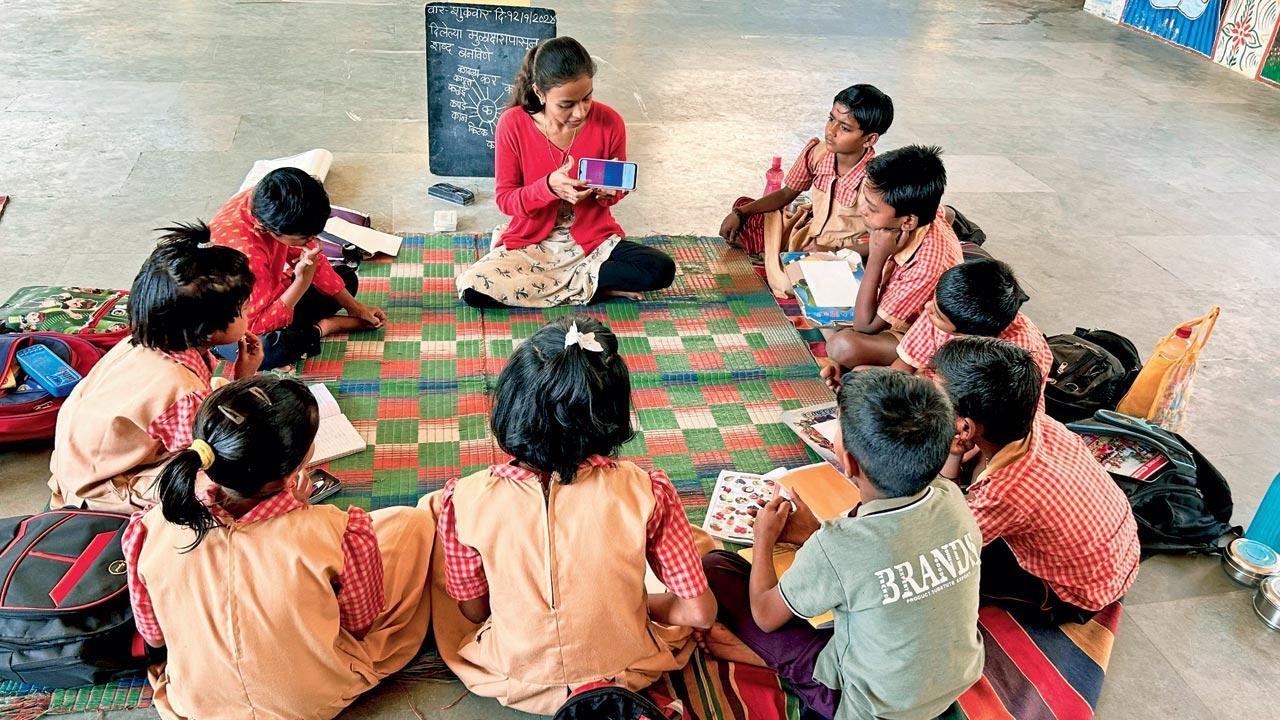Home / Sunday-mid-day / / Article /
How art makes low-income kids future ready
Updated On: 28 April, 2024 06:16 AM IST | Mumbai | Phorum Pandya
A Mumbai non-profit, currently top contender for the President’s Innovation Challenge at Harvard University, is all set to launch a pilot art curriculum across 20 civic schools in collaboration with MCGM

An educator trained by Saturday Art Class conducts an art session with children in Pune
In 2016, fifth-year architecture student Chhavi Khandelwal conducted her first art class for 30 class 2 students at Shankarwadi MPS school, Jogeshwari East, in collaboration with Manasi Mehan, a Teach for India fellow. The students had come prepared to draw a mountain, river and sun. The typical drawing we have all scribbled once as students.
But, Khandelwal asked the kids to feel the paint. “Mummy gussa karegi,” one student said. By the end of the class, each of them had dunked their palms into paint and transferred the print onto paper. “Manasi strung all the artworks together into a banner. When the students questioned this, we spoke to them about teamwork. Soon, the class became a space for students to express what they were feeling,” says Khandelwal, who calls her meeting with Mehan, who is currently pursuing a Masters degree in Education from Harvard, serendipitous.




